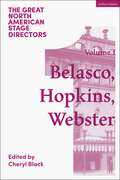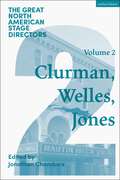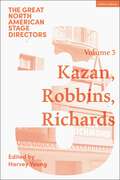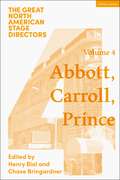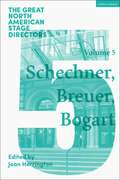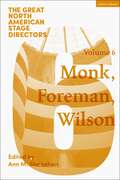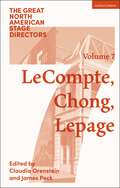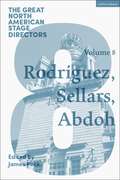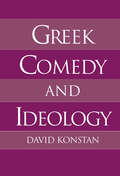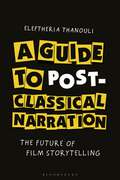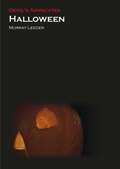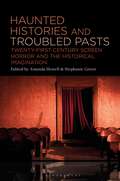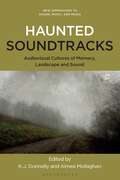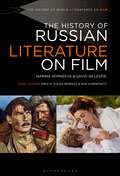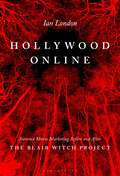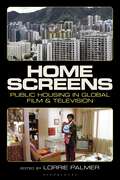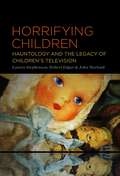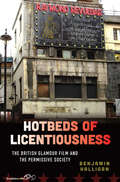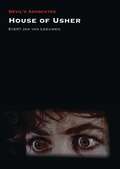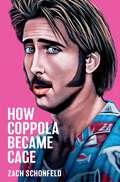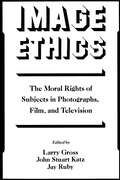- Table View
- List View
Great North American Stage Directors Volume 1: David Belasco, Arthur Hopkins, Margaret Webster (Great Stage Directors)
by Professor James PeckThis volume assesses the contributions of David Belasco, Arthur Hopkins, and Margaret Webster, whose careers shaped the artistic and specialist identity of the Broadway director. Their work spans almost a century and captures the rapidly changing social and cultural landscape of 20th-century America. While their aesthetic styles differed greatly, they were united in their mastery of theatre craft and their impact on theatrical collaboration. The essays in this volume explore how these directors established and exploited Broadway as the epicentre of theatre in the United States, blended the role of producer and director, and managed the tensions between commercial success and artistic ambition.The Great North American Stage Directors series provides an authoritative account of the art of directing in North America by examining the work of twenty-four major practitioners from the late 19th century to the present. Each of the eight volumes examines three directors and offers an overview of their practices, theoretical ideas, and contributions to modern theatre. The studies chart the life and work of each director, placing his or her achievement in the context of other important theatre practitioners and broader social history. Written by a team of leading experts, the series presents the genealogy of directing in North America while simultaneously chronicling crucial trends and championing contemporary interpretation.
Great North American Stage Directors Volume 2: Harold Clurman, Orson Welles, Margo Jones (Great Stage Directors)
by Professor James PeckThis volume assesses the accomplishments of three mid-20th century, North American stage directors: Harold Clurman, Orson Welles, and Margo Jones. Though their theatre-making endeavours were distinct, each produced work that challenged preconceived notions of theatre-making, all while working within the structure of a company. As directors drawn to the potential rewards of collaboration, all also were keenly adept at understanding how the relationship with a company of collaborators is often marked by struggle and crisis. The essays in this volume explore how these accomplished directors not only created bold work, but also drew on the complex energies of the theatre companies with which they worked to reimagine the shape and scope of theatre directing.The Great North American Stage Directors series provides an authoritative account of the art of directing in North America by examining the work of twenty-four major practitioners from the late 19th century to the present. Each of the eight volumes examines three directors and offers an overview of their practices, theoretical ideas, and contributions to modern theatre. The studies chart the life and work of each major North American theatre director, placing his or her achievement in the context of other important theatre practitioners and broader social history. Written by a team of leading experts, the series presents the genealogy of directing in North America while simultaneously chronicling crucial trends and championing contemporary interpretation.
Great North American Stage Directors Volume 3: Elia Kazan, Jerome Robbins, Lloyd Richards (Great Stage Directors)
by Professor James PeckThis volume chronicles the lives and artistry of Elia Kazan, Jerome Robbins, and Lloyd Richards. Their commitment to staging new works, which often focused on the experiences of immigrant and working-class families, significantly expanded the scope and possibilities of American theatre across the 20th century. It illuminates too their collaborations with a range of innovative theatre artists, including Lee Strasberg, Clifford Odets, Marlon Brando, Arthur Miller, Tennessee Williams, Lorraine Hansberry, Leonard Bernstein, Stephen Sondheim, and August Wilson.The Great North American Stage Directors series provides an authoritative account of the art of directing in North America by examining the work oftwenty-four major practitioners from the late 19th century to the present. Each of the eight volumes examines three directors and offers an overview of their practices, theoretical ideas, and contributions to modern theatre. The studies chart the life and work of each director, placing his or her achievement in the context of other important theatre practitioners and broader social history. Written by a team of leading experts, the series presents the genealogy of directing in North America while simultaneously chronicling crucial trends and championing contemporary interpretation.
Great North American Stage Directors Volume 4: George Abbott, Vinnette Carroll, Harold Prince (Great Stage Directors)
by Professor James PeckGeorge Abbott, Vinnette Carroll, and Harold (Hal) Prince were trailblazing figures who helped shape and define the Broadway musical over the course of the 20th century. Their careers expanded the boundaries of the genre, highlighting the critical role of the director in the creation of a new musical. As theatre history, the essays in this volume help to complicate and deepen the reader's understanding of the musical genre of Broadway and of the enduring legacies of these three pioneers. As lessons in theatrical direction, they illustrate the particular issues involved in directing musicals, as well as the stakes of working commercially at the highest levels of the industry.The Great North American Stage Directors series provides an authoritative account of the art of directing in North America by examining the work of twenty-four major practitioners from the late 19th century to the present. Each of the eight volumes examines three directors and offers an overview of their practices, theoretical ideas, and contributions to modern theatre. The studies chart the life and work of each director, placing his or herachievement in the context of other important theatre practitioners and broader social history. Written by a team of leading experts, the series presents the genealogy of directing in North America while simultaneouslychronicling crucial trends and championing contemporary interpretation.
Great North American Stage Directors Volume 5: Richard Schechner, Lee Breuer, Anne Bogart (Great Stage Directors)
by Professor James PeckRichard Schechner, Lee Breuer, and Anne Bogart share a spirit of profound adventure and that adventure is the redefinition of theatre itself. They are rare hybrids; the confluence of their theatrical roles as directors, scholars, theorists and teachers has placed them among the most influential thinker/practitioners of their generation. This book reveals the ways in which their consistent inquiry enabled them to re-examine, re-frame, and re-invent their own practice. The essays in this volume explore the ways in which Schechner, Breuer and Bogart have established powerful legacies of consistently innovative theatre most often created in the company of an ensemble of collaborative artists. Their influence is undeniable in the reformulation of theatre practices from the 1970s onward. The Great North American Stage Directors series provides an authoritative account of the art of directing in North America by examining the work of twenty-four major practitioners from the late 19th century to the present. Each of the eight volumes examines three directors and offers an overview of their practices, theoretical ideas, and contributions to modern theatre. The studies chart the life and work of each director, placing his or her achievement in the context of other important theatre practitioners and broader social history. Written by a team of leading experts, the series presents the genealogy of directing in North America while simultaneously chronicling crucial trends and championing contemporary interpretation.
Great North American Stage Directors Volume 6: Meredith Monk, Richard Foreman, Robert Wilson (Great Stage Directors)
by Professor James PeckThis volume assesses the work of Meredith Monk, Richard Foreman, and Robert Wilson, three artists who have revolutionized the craft of directing and the art of theatre in both related and unique ways. Though their early artistic backgrounds differ, ranging from architecture, music and dance to writing, they are similar in that none of them began their career as a director per se or received formal training as such. They each assumed the director's role based on the demands of their complex artistic visions, which combine art forms, but resist synthesis, finding expression in the differences and tensions between the forms. The essays in this volume explore how these auteur directors combine text, movement, film, sound and music, installation and visual arts to achieve their visions, employing multi-perceptual modes to evoke full and rich theatrical experiences. The Great North American Stage Directors series provides an authoritative account of the art of directing in North America by examining the work of twenty-four major practitioners from the late 19th century to the present. Each of the eight volumes examines three directors and offers an overview of their practices, theoretical ideas, and contributions to modern theatre. The studies chart the life and work of each director, placing his or her achievement in the context of other important theatre practitioners and broader social history. Written by a team of leading experts, the series presents the genealogy of directing in North America while simultaneously chronicling crucial trends and championing contemporary interpretation.
Great North American Stage Directors Volume 7: Elizabeth LeCompte, Ping Chong, Robert Lepage (Great Stage Directors)
by Professor James PeckThis volume focuses on three artists who embrace media and technology as essential elements of their theatrical expression: Elizabeth LeCompte, Ping Chong, and Robert Lepage. Diverse in their aesthetic interests, they nevertheless share an approach to directing that includes technological media on stage as central to a rigorously crafted production concept. Technological elements live alongside and negotiate with the theatre's human players, disclosing, shaping, and even intruding on the dramas they enact. The essays in this volume explore how all three directors have provided decisive responses to a question that has dogged the theatre for at least the last century: what relationship can theatre, an art form grounded in live, ephemeral, expression, have to technology?The Great North American Stage Directors series provides an authoritative account of the art of directing in North America by examining the work of twenty-four major practitioners from the late 19th century to the present. Each of the eight volumes examines three directors and offers an overview of their practices, theoretical ideas, and contributions to modern theatre. The studies chart the life and work of each director, placing his or her achievement in the context of other important theatre practitioners and broader social history. Written by a team of leading experts, the series presents the genealogy of directing in North America while simultaneously chronicling crucial trends and championing contemporary interpretation.
Great North American Stage Directors Volume 8: Jesusa Rodriguez, Peter Sellars, Reza Abdoh (Great Stage Directors)
by Professor James PeckThe three directors gathered in this volume all approach theatre-making in part as an act of citizenship. Jesusa Rodríguez, Peter Sellars, and Reza Abdoh differ markedly in many important respects, but they all come to the theatre as an intervention in the public sphere. Rodríguez, Sellars, and Abdoh blend a spirit of social critique with acts of democratic community building. These essays examine how theatre, for them, is not a sphere of aesthetic experience insulated from the divisions, antagonisms, and alliances of a conflicted society. It is a way to forge fleeting but consequential communities that might reverberate through that society and affect its future development.The Great North American Stage Directors series provides an authoritative account of the art of directing in North America by examining the work of twenty-four major practitioners from the late 19th century to the present. Each of the eight volumes examines three directors and offers an overview of their practices, theoretical ideas, and contributions to modern theatre. The studies chart the life and work of each director, placing his or her achievement in the context of other important theatre practitioners and broader social history. Written by a team of leading experts, the series presents the genealogy of directing in North America while simultaneously chronicling crucial trends and championing contemporary interpretation.
A Guide to Post-classical Narration: The Future of Film Storytelling
by Dr. Eleftheria ThanouliIn A Guide to Post-classical Narration, Eleftheria Thanouli expands and substantially develops the innovative theoretical work of her previous publication, Post-classical Cinema: an International Poetics of Film Narration (2009). A Guide to Post-classical Narration: The Future of Film Storytelling presents a concise and comprehensive overview of the creative norms of the post-classical mode of narration. With dozens of cases studies and hundreds of color stills from films across the globe, this book provides the definitive account of post-classical storytelling and its techniques. After surfacing in auteur films in varied production milieus in the 1990s, the post-classical options continued to gain ground throughout the 2000s and 2010s, gradually fertilizing several mainstream productions in Hollywood. From Lars von Trier's Europa (1991) to Zack Snyder's Army of the Dead (2021) and Baz Luhrmann's Elvis (2022), the post-classical narration has shown not only impressive resilience but also tremendous creativity in transforming its key formal principles, such as fragmented and multi-thread plotlines, hypermediated realism, parody, graphic frame construction, complex chronology, and intense self-consciousness. Through the meticulous textual analysis of the post-classical works, Eleftheria Thanouli addresses head-on a series of methodological questions in narrative research and brings the tradition of historical poetics back into the limelight. By reinforcing her previous work with numerous new films as well as more nuanced narrative terms and concepts, she not only strengthens her position on post-classical cinema but also establishes the relevance of formalist analysis in the study of film today.
Halloween (Devil's Advocates)
by Murray LeederThe 1970s represented an unusually productive and innovative period for the horror film, and John Carpenter's Halloween (1978) is the film that capped that golden age – and some say ruined it, by ushering in the era of the slasher film. Considered a paradigm of low-budget ingenuity, its story of a seemingly unremarkable middle-American town becoming the site of violence on October 31 struck a chord within audiences. The film became a surprise hit that gave rise to a lucrative franchise, and it remains a perennial favourite. Much of its success stems from the simple but strong constructions of its three central characters: brainy, introverted teenager Laurie Strode, a late bloomer compared to her more outgoing friends, Dr. Loomis, the driven, obsessive psychiatrist, and Michael Myers, the inexplicable, ghostlike masked killer.Film scholar Murray Leeder offers a bold and provocative study of Carpenter's film, which hopes to expose qualities that are sometime effaced by its sequels and remakes. It explores Halloween as an unexpected ghost film, and examines such subjects as its construction of the teenager, and the relationship of Halloween the film to Halloween the holiday, and Michael Myers's brand of "pure evil." It is a fascinating read for scholars and fans alike.
Haunted Histories and Troubled Pasts: Twenty-First-Century Screen Horror and the Historical Imagination
Haunted Histories and Troubled Pasts speaks to how a transnational array of recent screen entertainments participate, through horror, in public discourses of history, the social and creative work of reshaping popular understanding of our world through the lens of the past.Contemporary film and television – and popular screen cultures more generally – are distinguished by their many and varied engagements with history, including participation in worldwide movements to reconcile past losses and injuries with present legacies. The chapters in this collection address themselves to 21st-century screen horror's participation in this widespread fascination with and concern for the historical - its recurrent reimagining of the relation between the past and present, which is part of its inheritance from the Gothic. They are concerned with the historical work of horror's spectral occupations, its visceral threats of violence and its capacity for exploring repressed social identities, as well as the ruptures and impositions of colonization and nationhood.Trauma is a key theme in this book, examined through themes of war and genocide, ghostly invasions, institutionalized abuse, apocalyptic threat and environmental destruction. These persistent, fearful reimaginings of the past can take many lurid – sometimes tritely generic – forms. Together, these chapters explore and reflect upon horror's ability to speak through them to the unspoken of history, to push the boundaries and probe the fault-lines and ideological impositions of received historical narratives – while reminding us that history and the historical imagination persist as sites of contention.
Haunted Soundtracks: Audiovisual Cultures of Memory, Landscape, and Sound (New Approaches to Sound, Music, and Media)
The turn of the millennium has heralded an outgrowth of culture that demonstrates an awareness of the ephemeral nature of history and the complexity underpinning the relationship between location and the past. This has been especially apparent in the shifting relationship between landscape, memory and sound in film, television and other media. The result is growing interest in soundtracks, as part of audiovisual culture, as well as an interest in the spectral aspects of culture more generally. This collection of essays focuses on audiovisual forms that foreground landscape, sound and memory. The scope of inquiry emphasises the ghostly qualities of a certain body of soundtracks, extending beyond merely the idea of 'scary films' or 'haunted houses.' Rather, the notion of sonic haunting is tied to ideas of trauma, anxiety or nostalgia associated with spatial and temporal dislocation in contemporary society. Touchstones for the approach are the concepts of psychogeography and hauntology, pervasive and established critical strategies that are interrogated and refined in relation to the reification of the spectral within the soundtracks under consideration here.
The History of Russian Literature on Film (The History of World Literatures on Film)
by Marina Korneeva David GillespieUnlike most previous studies of literature and film, which tend to privilege particular authors, texts, or literary periods, David Gillespie and Marina Korneeva consider the multiple functions of filmed Russian literature as a cinematic subject in its own right-one reflecting the specific political and aesthetic priorities of different national and historical cinemas. In this first and only comprehensive study of cinema's various engagements of Russian literature focusing on the large period 1895-2015, The History of Russian Literature on Film highlights the ways these adaptations emerged from and continue to shape the social, artistic, and commercial aspects of film history.
Hollywood Online: Internet Movie Marketing Before and After The Blair Witch Project
by Dr. Ian LondonHollywood Online provides a historical account of motion picture websites from 1993 to 2008 and their marketing function as industrial advertisements for video and other media in the digital age.The Blair Witch Project is the most important example of online film promotion in cinema history. Over the last thirty years only a small number of major and independent distributors have converted internet-created buzz into box-office revenues with similar levels of success. Yet readings of how the film's internet campaign broke new ground in the summer of 1999 tend to minimize, overlook or ignore the significance of other online film promotions. Similarly, claims that Blair initiated a cycle of imitators have been repeated in film publications and academic studies for more than two decades. This book challenges three major narratives in studies about online film marketing: Hollywood's major studios and independents had no significant relationship to the internet in the 1990s; online film promotions only took off after 1999 because of Blair; and Hollywood cashed-in by initiating a cycle of imitators and scaling up corporate activities online. Hollywood Online tests these assumptions by exploring internet marketing up to and including the film's success online (Pre-Blair, 1993-9), then by examining the period immediately after Blair (Post-Blair, 2000-8) which broadly coincides with the rise and decline of DVD, as well as the emergence of the social media sites MySpace, Facebook and Twitter.
Home Screens: Public Housing in Global Film & Television
How do film and television makers around the world depict public housing? Why is public housing so often chosen as the backdrop for drama, horror, social critique, rebellion, violence, artistic creativity, explorations of race relations and political intrigue?Home Screens answers these questions by examining the ways in which socialized housing projects around the world are represented on screen. The volume brings together a diverse group of interdisciplinary scholars, who explore documentary and fictional portrayals of the architecture of public housing, and the communities that inhabit it, ranging from the 1950s to the present. Examining international film and media texts such as Die Architekten (1990), Swagger (2016), Cooley High (1975), Mee-Pok Man (1995), Treme (2010–2013), Mamma Roma (1962), The Pruitt-Igoe Myth (2011), and Below the Lion Rock (1972–1976), essays within this book consider public and private attitudes toward socialised housing, explaining how onscreen representations shape perceptions of these ubiquitous, often-stigmatized urban locations.
Horrifying Children: Hauntology and the Legacy of Children’s Television
Horrifying Children examines weird and eerie children's television and literature via critical analysis, memoir and autoethnography.There has been an explosion of interest in the impact of children's television and literature of the late twentieth century. In particular, the 1970s, '80s and '90s are seen as decades that shaped a great deal of the contemporary cultural landscape. Television of this period dominated the world of childhood entertainment, drawing freely upon literature and popular culture, like the Garbage Pail Kids and Stranger Things, and much of it continues to resonate powerfully with the generation of cultural producers (fiction writers, screenwriters, directors, musicians and artists) that grew up watching the weird, the eerie and the horrific: the essence of 21st-century Hauntology. In these terms this book is not about children's television as it exists now, but rather as it features as a facet of memory in the 21st century. As such it is the legacy of these television programmes that is at the core of Horrifying Children. The 'haunting' of adults by what we have seen on the screen is crucial to the study. This collection directly addresses that which 'scared us' in the past insomuch as there is a correlation between individual and collective cultural memory, with some chapters providing an opportunity for situating existing explorations and understandings of Gothic and Horror TV within a hauntological and experiential framework.
Horror That Haunts Us: Nostalgia, Revisionism, and Trauma in Contemporary American Horror Film and Television
Horror’s pleasures fundamentally hinge on looking backward, either on destabilising trauma, or as a period of comfort and happiness which is undermined by threat. However, this stretches beyond the scares on our screens to the consumption and criticism of the monsters of our past. The horror films of our youth can be locations of psychological and social trauma, or the happy place we go back to for comfort when our lives become unsettled. Horror That Haunts Us: Nostalgia, Revisionism, and Trauma in Contemporary American Horror is a collection of essays that brings together multiple theoretical and critical approaches to consider the way popular horror films from the last fifty years communicate, embody, and rework our view of the past. Whether we look at our current relationship to the scary movies of decades ago as personal or cultural memory, the way historical and sociopolitical events and frameworks – especially traumas – reframe the way we look at our pasts, or even the way recent horror films and video games look back at our past (and the past of the genre itself) through a filter of experience and history, this collection will show the close relationship between nostalgia and popular horror. These essays also demonstrate a range of unique and diverse points of view from both established and emerging scholars on the subject of horror and the past. Edited by seasoned horror experts Karrá Shimabukuro and Wickham Clayton, Horror That Haunts Us is a book with the aim of examining why we return again and again to certain popular horror films, either as remakes or reboots or as the basis for pastiche and homage.
Hotbeds of Licentiousness: The British Glamour Film and the Permissive Society
by Benjamin HalliganHotbeds of Licentiousness is the first substantial critical engagement with British pornography on film across the 1970s, including the “Summer of Love,” the rise and fall of the Permissive Society, the arrival of Margaret Thatcher, and beyond. By focusing on a series of colorful filmmakers whose work, while omnipresent during the 1970s, now remains critically ignored, author Benjamin Halligan discusses pornography in terms of lifestyle aspirations and opportunities which point to radical changes in British society. In this way, pornography is approached as a crucial optic with which to consider recent cultural and social history.
Hotbeds of Licentiousness: The British Glamour Film and the Permissive Society
by Benjamin HalliganHotbeds of Licentiousness is the first substantial critical engagement with British pornography on film across the 1970s, including the “Summer of Love,” the rise and fall of the Permissive Society, the arrival of Margaret Thatcher, and beyond. By focusing on a series of colorful filmmakers whose work, while omnipresent during the 1970s, now remains critically ignored, author Benjamin Halligan discusses pornography in terms of lifestyle aspirations and opportunities which point to radical changes in British society. In this way, pornography is approached as a crucial optic with which to consider recent cultural and social history.
House of Usher (Devil's Advocates)
by Evert van LeeuwenDespite being the product of Roger Corman’s AIP exploitation studio, House of Usher enjoys a high standing. But while the impact and cult status of Corman’s Edgar Allan Poe cycle is often discussed in histories of gothic, horror, and exploitation cinema, no extended analysis and critical discussion has been published to date that explores specifically the aesthetic appeal of House of Usher. This Devil’s Advocate provides a complete study of the aesthetic appeal of Corman’s influential first Poe picture.Evert van Leeuwen explores the underlying narrative structure borrowed from Poe’s original story and shows how closely Richard Matheson’s script followed Poe’s theory of short fiction. He goes on to explore the formal techniques of allegory and symbolism employed to represent the house as a monster before focusing on Corman’s imagery, showing how the use of specific camera angles, lenses, colors, and sound effects create and sustain the simultaneously morbid and beautiful atmosphere of gothic decay. Finally, he situates horror icon Vincent Price’s performance as Roderick Usher in the context of the nineteenth-century Romantic misfit and the postwar countercultural antihero, two closely related cultural identities.
How Coppola Became Cage
by Zach SchonfeldAn in-depth look at one of the film industry's most audacious working actors In 1982, a gangly teenager named Nicolas Coppola made his film debut and changed his name to Nicolas Cage, determined to distance himself from his famous family. Once he achieved stardom as the rebel hunk of 1983's Valley Girl, Cage began a career defined by unorthodox risks and left turns that put him at odds with the stars of the Brat Pack era. How Coppola Became Cage takes readers behind the scenes of the beloved cult movies that transformed this unknown actor into an eccentric and uncompromising screen icon with a wild-eyed gift for portraying weirdos, outsiders, criminals-and even a romantic capable of seducing Cher. Author Zach Schonfeld traces Cage's rise through the world of independent cinema and chronicles the stories behind his career-making early performances, from the method masochism of Birdy to the operatic torment of Moonstruck and abrasive expressionism of Vampire's Kiss, culminating with the astonishing pathos of Leaving Las Vegas. Drawing on more than 100 new interviews with Cage's key collaborators--including David Lynch, Martha Coolidge, John Patrick Shanley, and Mike Figgis--How Coppola Became Cage offers a revealing portrait of Cage's wildly intense devotion to his performances behind the scenes and his creative self-discovery as he drew on influences as far-flung as silent cinema and German Expressionism. These were all crucial ingredients in the creation of a singular acting style that rejects the limits of realism. Brimming with previously untold stories and insights, How Coppola Became Cage both revels in and demystifies Cage's onscreen eccentricities. No other modern actor has explored such profound creative extremes while bending the boundaries of good taste. Here is the origin story of an actor who truly is wild at heart and weird on top.
I Walked With a Zombie (Devil's Advocates)
by Clive DawsonI Walked with a Zombie (1943), Val Lewton's second feature for RKO Radio Pictures, was described by critic Robin Wood as 'perhaps the most delicate poetic fantasy in the American Cinema.' Following immediately in the wake of the groundbreaking Cat People (1942), Zombie pioneered an even more radical narrative approach yet proved to be the critical and commercial equal of its predecessor, cementing the reputation of both Lewton and his director, Jacques Tourneur. Despite the lurid, studio-imposed title, I Walked with a Zombie is a subtle and ambiguous visual poem that advanced a daring condemnation of slavery and colonialism at a time when such themes were being actively suppressed by government censors. Clive Dawson charts the complex development and production of the project, essential to understanding the concerns of the filmmakers in the context of wartime Hollywood, then analyses the film in detail, referencing a broad range of academic studies of the audio-visual text and distilling new insight into its layers of meaning. Finally, he explores the film's reception, and the influence it exerted on the horror genre and beyond. Extensive primary research has uncovered a wealth of previously unpublished new material that solves many unanswered questions and dispels various myths about this utterly unique film.
